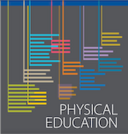
In this lesson plan, educators will help their students learn the correct putting stroke, proper grip, and stance in a 85 minute lesson.
- Subject:
- Physical Education
- Material Type:
- Lesson Plan
- Author:
- Katie Neal
- Date Added:
- 02/28/2023

In this lesson plan, educators will help their students learn the correct putting stroke, proper grip, and stance in a 85 minute lesson.

Children will be able to identify healthy foods and non-healthy foods. They will be able to have fun while learning and being active. The children will also be able to use there own language to teach their fellow classmates new words for the pictures.
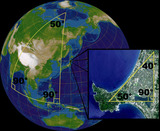
The purpose of this lesson is to show students how to break up land division and survey their own property. Students will gain a knowledge of how surveyor's come about dictating property lines. The lesson gives a greater understanding of Law of Cosines and Heron's Formula. Image Reference:Lars H. Rohwedder, Sarregouset - Own work from source files Image:OgaPeninsulaAkiJpLandsat.jpg (GFDL) and Image:Orthographic Projection Japan.jpg (GFDL and CC-By-SA).

This lesson is intended to be a culminating activity to assess a student's ability to use some of the basic features of Google Sheets. It is gamified with a breakout rooms style Google Forms in order to increase engagement. Even though it is intended to be a culminating activty, It also has scaffolds and embedded tutorials to support all student skill levels
Students will use the internet, text books, and other resources to identify historic American Indian, State of Deseret, Utah Territory, and current Utah state governments and compare and contrast.
Define media, brainstorm examples, and discuss the appeal of various media
Recognize that specific elements (e.g., visual images, music, special effects) are used to construct a message for intended purposes.
Define with examples basic terms (e.g. media literacy, mass media, local media, social media). Review previous terminology.
Define with examples basic terms (e.g. media literacy, mass media, local media, social media). Review previous terminology.
Define basic terms and concepts of media literacy.
This activity emphasizes the importance of teaching reading and writing strategies for students to use with informational text.

Students will, over a week, record the amount of time they spend sleeping, attending school, watching T.V., exercising and doing homework. At the end of the week the students will graph all of their information and discuss how sleep impacts their learning. The graphs will be used to discuss daily habits and ways to improve overall health.
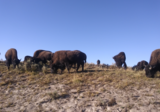
This is a lesson plan about Grassland Animals. Students will become familiar with habitats and what types of animals can be found in grassland areas. They will create a slide show using Keynote and present it to their peers. They will use a graphic organizer to gather information for their slide shows.


This lesson plan is to help students create a podcast about a person or event during the Great Depression to build upon background and indepth knowledge. This is meant to be a final project or assesment to the Standard about Great Depression.
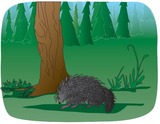
"The Greedy Porcupine" is a Northwestern Band of Shoshone tribe tale. According to Shoshone culture, this tale teaches a valuable lesson that everyone should be proud of who he or she is, not envious of others. Everyone should also be grateful for what they have and avoid complaining. Everyone is given special gifts and talents, which should be used appropriately. If talents are misused, they could be taken away.After reading the story students willb identify characters and the lesson or moral of the story. The students will create a character map to aid in comprehension of the story and provide the basis for the discussion in character education, tying in with the moral of the story.

This is an introductory unit on Greek and Latin roots. There are three lists with accompanying learning tasks.

Students read a brochure about disease prevention and create a poster promoting one disease prevention point.
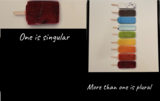
This lesson is aimed at ELL students, it includes basic elements of grammar such as the meaning of a noun, as part of a complete sentence. It also includes seven mini-lessons to explain some of the English language rules to convert a single noun into a plural noun.The lesson includes some practice and a quiz to check knowledge acquisition. There is no specific grade as it is part of ELL instruction.

This is a lesson plan created by Brooke Alderks Guymon. Students will create a Keynote presentation of animal adaptations in different habitats. They will create a Title slide, four slides with two facts and a picture on each one, and a reference slide.